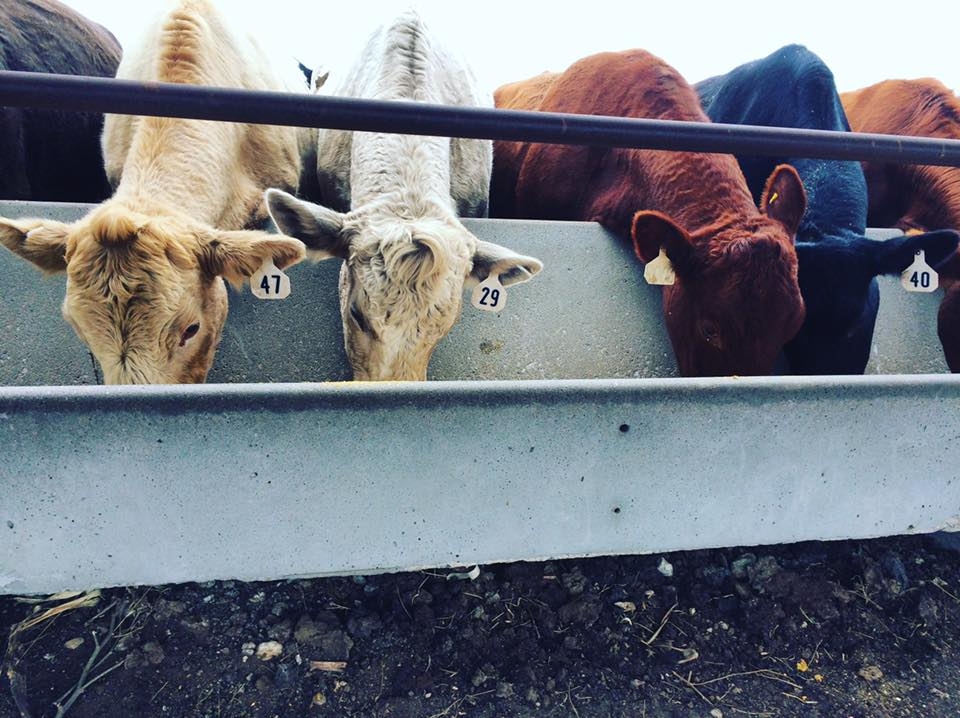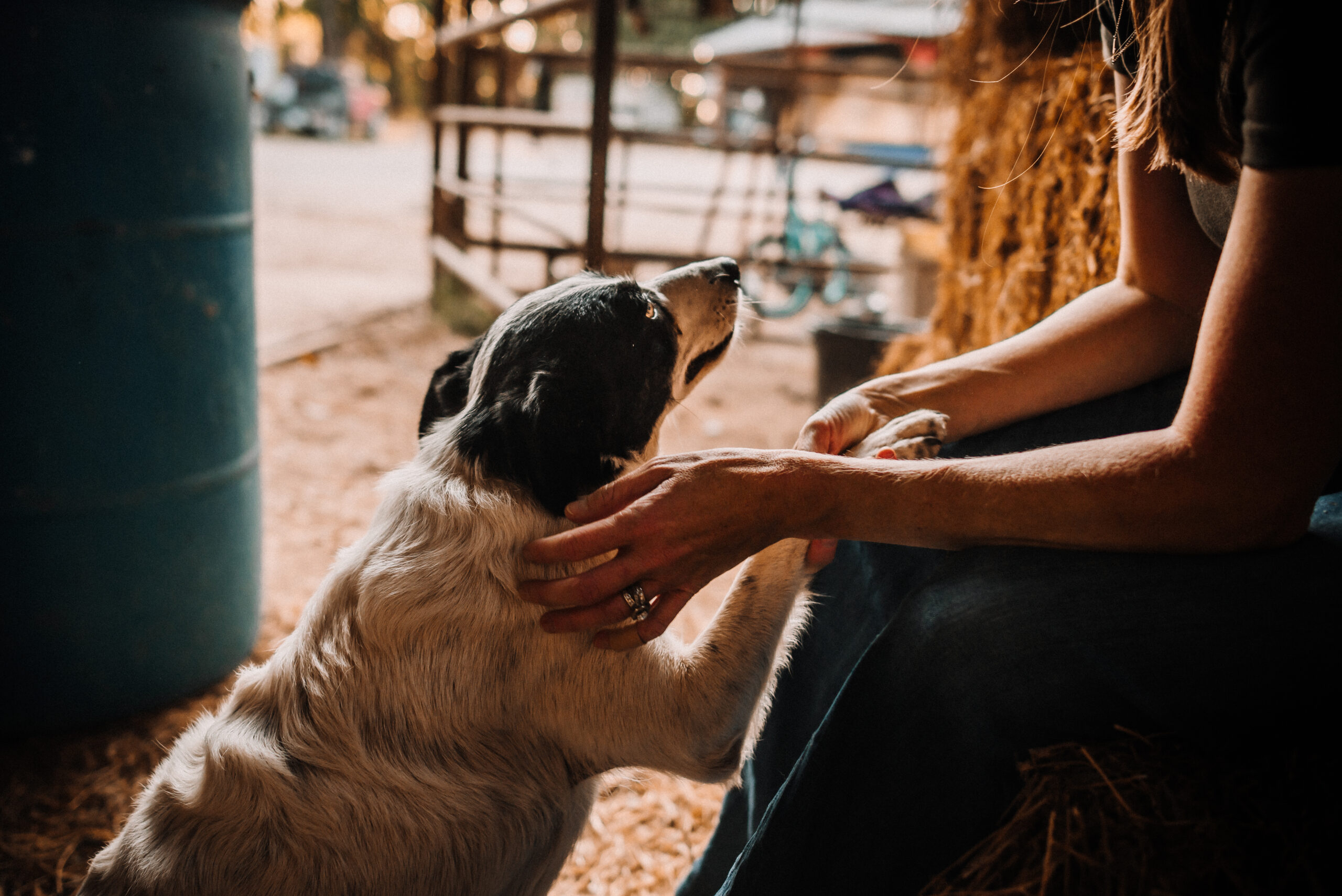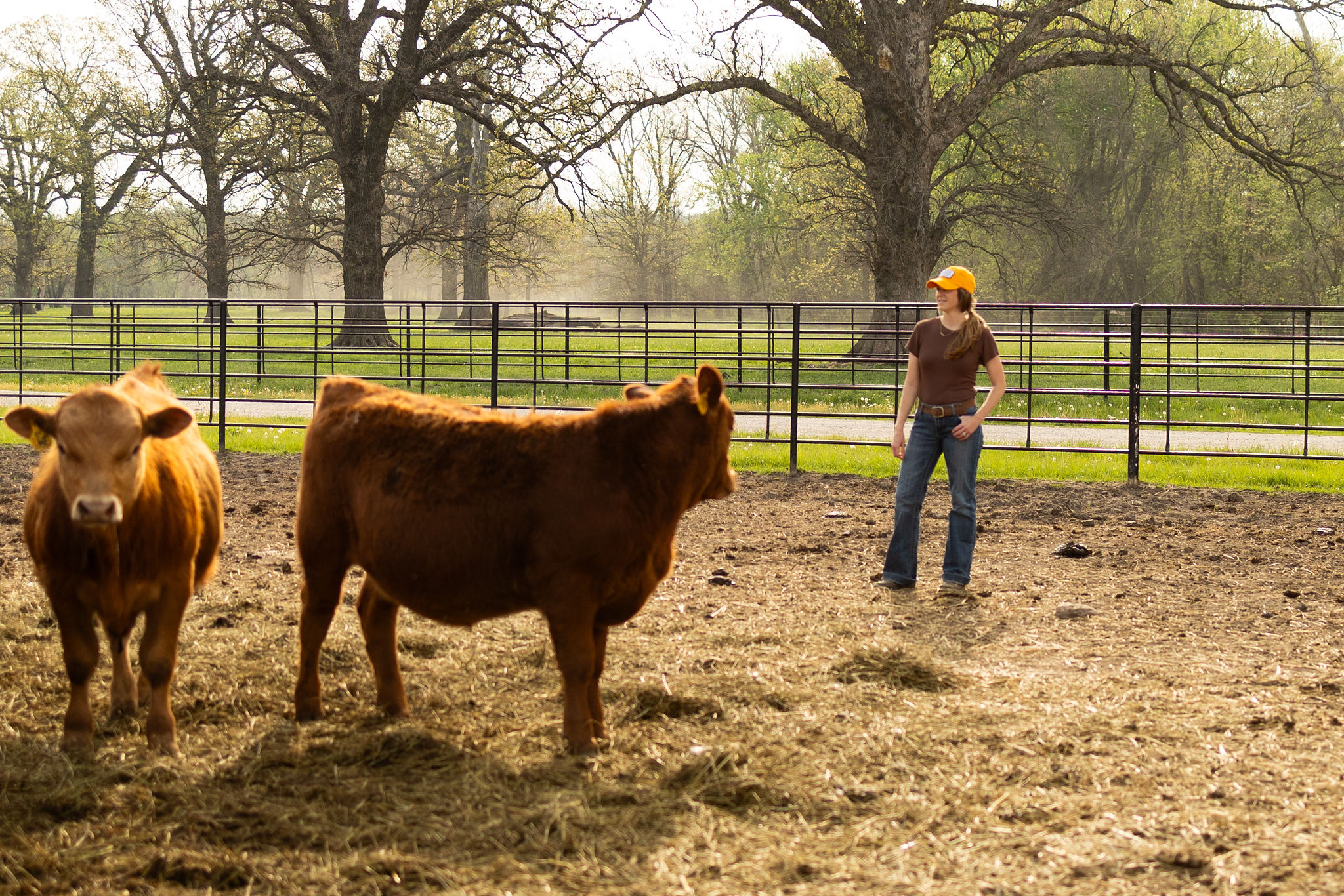You’ve heard ‘grass-fed’ on tv, online and in the grocery store. But what does that mean for cattle that aren’t grass-fed? Are they eating dead bugs? Tree bark? What is in their bellies if not grass?
Well, it’s not really that much of a mystery because nearly ALL cattle spend most of their lives grazing on grass or eating some type of forage (hay, silage etc). The difference between grass-finished and grain-finished cattle is what they eat the final 3-5 months of their life.
Nearly all cattle eat grass most of their life.
Grass-finished cattle will spend their whole life grazing and will generally reach slaughter weight (~1200-1300 lbs) at roughly 17-19 months of age. Grain-finished cattle, on the other hand, spend most of their lives (roughly 75%) on grass or eating hay but spend the last 3-5 months of their lives in a feedyard where they will eat a specially formulated ration of hay, grain, vitamins and minerals until they reach a slaughter weight of 1200-1300 lbs. However, grain-finished cattle consume feed with more energy and protein, so they are able to reach slaughter weight more quickly than grass-finished cattle, generally around 14-16 months of age. This can vary based on the producer’s decision on when to ship the cattle but it’s a good benchmark for those unfamiliar with the beef industry. Another difference between the two types of beef is the taste – grain-finished beef tastes different than grass-finished. Not necessarily better or worse but different. I have eaten A LOT of grain-finished beef but I have also done a fair bit of traveling around the world to places where cattle are strictly grass-finished. I prefer grain-finished beef, but I suppose that is what I have eaten 99.999% of the time so it’s what I’m used to – other consumers may prefer the grass-finished flavor. It’s all about your preference – just know that it’s all safe and healthy, regardless of how it was finished.

Now that you know that grass and hay are part of every cow’s diet (it has to be, cattle NEED forage for survival) let’s get down to the brass tacks of the cattle business. The beef. Here are the facts behind these two different, yet equally as nutritious and safe, types of beef for your plate.
Grass-Finished Beef
- Cattle spend their whole lives eating grass or forage
- Is an excellent source of 10 essential vitamins and nutrients (zinc, iron, protein, B6 & B12 – just to name a few)
- Half the fat in grass-finished beef is monounsaturated fat (the good kind like in avocados and olive oil)
- Can be organic, natural or conventionally produced
Grain-Finished Beef
- Cattle spend the majority of their lives eating grass or forage; when they arrive at the feedyard they continue eating hay and forage, along with grains.
- Is an excellent source of 10 essential vitamins and nutrients (zinc, iron, protein, B6 & B12 – just to name a few)
- Half the fat in grain-finished beef is monounsaturated fat (the good kind like in avocados and olive oil)
- Can be organic, natural or conventionally produced
- May include feedstuffs that are sourced locally from other food production industries (potato starch in Idaho, citrus pulp in Florida, pineapple bran in Hawaii). Click here to see food production by-products that are fed to cattle around the nation.

Beef at the bunk
So you see, the only significant way in which grass-finished beef and grain-finished beef differ is the last few months of their lives. I hope when it’s laid out this way, you can feel comfortable supporting all beef producers – whether they raise their cattle on grass/hay 100% of the time or if they choose to supplement their cattle with grain.
Now, as a reader request, we’re going to talk about how cattle grade. More specifically their quality grade and what that means to us as beef lovers and eaters.
When I say quality grade I’m talking about a grade given to the carcass of an animal, based on palatability of meat (tenderness, juiciness and flavor). Some of the factors that go into this decision are meat color, texture, maturity, firmness and the distribution of marbling. Ahhh, sweet marbling – aka intramuscular fat. A certified USDA meat grader (that is a real job) will evaluate the amount and distribution of the marbling in the ribeye muscle of a carcass to help determine the quality grade (because marbling is not the only factor, as I mentioned earlier).
There are three main quality grades you probably notice in the marketplace – prime, choice and select. There are class breakdowns within these grades but for clarity and length purposes, I’m only going to discuss the overall grade.
Prime beef is from young well-fed cattle. The meat has abundant marbling and is generally found in upscale restaurants and hotels (Morton’s, Del Frisco’s, Ruth’s Chris, etc). These roasts and steaks are great for grilling and are very tender and juicy.
Choice beef is still high quality but has less marbling than prime beef. This meat will be juicy and tender, very similar to prime beef, and is very good when grilled or dry-heat cooked.
Select beef is normally leaner (less marbling) than its fancier Choice and Prime cousins. It’s still fairly tender but may not be as juicy so I would highly recommend marinating it before cooking. Here’s a great one to try!

The prime-choice-select grading scale via USDA
Beef that doesn’t fit into these grades is generally used to make processed products instead of being sold in the grocery store as a whole muscle cut. It’s still safe and good to eat, but it doesn’t have the marbling or other needed characteristics to launch it into the higher quality levels. Most of the time, prime and choice beef is from grain-finished cattle because grain gives most cattle that extra “oomph” they need to bump up their marbling. You can purchase grass-finished prime and choice beef, it’s just harder to find. And, like I said, both types can be organic or natural, and can be raised using antibiotics (responsibly) or growth hormones. Those tools are not limited to just one type of producer.
Now, ready for a steak? If you have more questions about the beef we eat, cattle or food in general, please let me know!
Until next time,
~ Buzzard ~
Want posts to be sent to you automatically? Sign up on the homepage in the right side pane. I never use your email address for marketing purposes – strictly for post delivery.



